[English] 日本語
 Yorodumi
Yorodumi- PDB-8w06: Crystal Structure of the reconstruction of the ancestral trioseph... -
+ Open data
Open data
- Basic information
Basic information
| Entry | Database: PDB / ID: 8w06 | |||||||||
|---|---|---|---|---|---|---|---|---|---|---|
| Title | Crystal Structure of the reconstruction of the ancestral triosephosphate isomerase of the last opisthokont common ancestor obtained by maximum likelihood with PGH | |||||||||
 Components Components | Triosephosphate isomerase | |||||||||
 Keywords Keywords | ISOMERASE / Triose phosphate isomerase / Ancestral sequence reconstruction | |||||||||
| Function / homology | ACETATE ION / ACETIC ACID / DI(HYDROXYETHYL)ETHER / TRIETHYLENE GLYCOL / PHOSPHOGLYCOLOHYDROXAMIC ACID Function and homology information Function and homology information | |||||||||
| Biological species | synthetic construct (others) | |||||||||
| Method |  X-RAY DIFFRACTION / X-RAY DIFFRACTION /  MOLECULAR REPLACEMENT / Resolution: 2.06 Å MOLECULAR REPLACEMENT / Resolution: 2.06 Å | |||||||||
 Authors Authors | Perez-Nino, J.A. / Rodriguez-Romero, A. / Guerra-Borrego, Y. / Fernandez-Velasco, D.A. | |||||||||
| Funding support |  Mexico, 2items Mexico, 2items
| |||||||||
 Citation Citation |  Journal: Protein Sci. / Year: 2024 Journal: Protein Sci. / Year: 2024Title: Stable monomers in the ancestral sequence reconstruction of the last opisthokont common ancestor of dimeric triosephosphate isomerase. Authors: Perez-Nino, J.A. / Guerra, Y. / Diaz-Salazar, A.J. / Costas, M. / Rodriguez-Romero, A. / Fernandez-Velasco, D.A. | |||||||||
| History |
|
- Structure visualization
Structure visualization
| Structure viewer | Molecule:  Molmil Molmil Jmol/JSmol Jmol/JSmol |
|---|
- Downloads & links
Downloads & links
- Download
Download
| PDBx/mmCIF format |  8w06.cif.gz 8w06.cif.gz | 417.6 KB | Display |  PDBx/mmCIF format PDBx/mmCIF format |
|---|---|---|---|---|
| PDB format |  pdb8w06.ent.gz pdb8w06.ent.gz | 338.9 KB | Display |  PDB format PDB format |
| PDBx/mmJSON format |  8w06.json.gz 8w06.json.gz | Tree view |  PDBx/mmJSON format PDBx/mmJSON format | |
| Others |  Other downloads Other downloads |
-Validation report
| Summary document |  8w06_validation.pdf.gz 8w06_validation.pdf.gz | 2.2 MB | Display |  wwPDB validaton report wwPDB validaton report |
|---|---|---|---|---|
| Full document |  8w06_full_validation.pdf.gz 8w06_full_validation.pdf.gz | 2.2 MB | Display | |
| Data in XML |  8w06_validation.xml.gz 8w06_validation.xml.gz | 97 KB | Display | |
| Data in CIF |  8w06_validation.cif.gz 8w06_validation.cif.gz | 128.1 KB | Display | |
| Arichive directory |  https://data.pdbj.org/pub/pdb/validation_reports/w0/8w06 https://data.pdbj.org/pub/pdb/validation_reports/w0/8w06 ftp://data.pdbj.org/pub/pdb/validation_reports/w0/8w06 ftp://data.pdbj.org/pub/pdb/validation_reports/w0/8w06 | HTTPS FTP |
-Related structure data
| Related structure data | 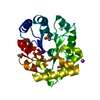 8v09C 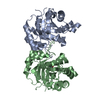 8v0aC 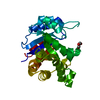 8v2wC 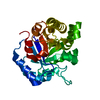 8v2xC 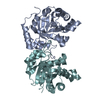 8w05C 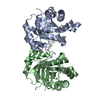 8w08C C: citing same article ( |
|---|---|
| Similar structure data | Similarity search - Function & homology  F&H Search F&H Search |
- Links
Links
- Assembly
Assembly
| Deposited unit | 
| ||||||||
|---|---|---|---|---|---|---|---|---|---|
| 1 | 
| ||||||||
| 2 | 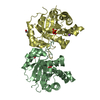
| ||||||||
| 3 | 
| ||||||||
| 4 | 
| ||||||||
| Unit cell |
|
- Components
Components
-Protein , 1 types, 8 molecules ABCDEFGH
| #1: Protein | Mass: 29599.588 Da / Num. of mol.: 8 Source method: isolated from a genetically manipulated source Details: Ancestral sequence reconstruction of the opisthokont common ancestor Source: (gene. exp.) synthetic construct (others) / Plasmid: plasmid / Details (production host): pET-28T(+) / Production host:  |
|---|
-Non-polymers , 9 types, 1285 molecules 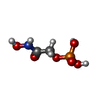
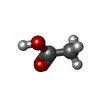
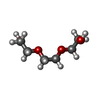
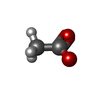

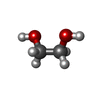











| #2: Chemical | ChemComp-PGH / #3: Chemical | ChemComp-ACY / | #4: Chemical | ChemComp-PGE / | #5: Chemical | ChemComp-ACT / | #6: Chemical | ChemComp-NA / | #7: Chemical | ChemComp-EDO / | #8: Chemical | #9: Chemical | ChemComp-CL / | #10: Water | ChemComp-HOH / | |
|---|
-Details
| Has ligand of interest | Y |
|---|
-Experimental details
-Experiment
| Experiment | Method:  X-RAY DIFFRACTION / Number of used crystals: 1 X-RAY DIFFRACTION / Number of used crystals: 1 |
|---|
- Sample preparation
Sample preparation
| Crystal | Density Matthews: 2.62 Å3/Da / Density % sol: 53.14 % |
|---|---|
| Crystal grow | Temperature: 291 K / Method: vapor diffusion, sitting drop Details: 0.2 M Magnesium acetate tetrahydrate, 20 % (w/v) PEG 3350 |
-Data collection
| Diffraction | Mean temperature: 100 K / Serial crystal experiment: N |
|---|---|
| Diffraction source | Source:  ROTATING ANODE / Type: RIGAKU MICROMAX-007 / Wavelength: 1.54178 Å ROTATING ANODE / Type: RIGAKU MICROMAX-007 / Wavelength: 1.54178 Å |
| Detector | Type: DECTRIS PILATUS3 R 200K-A / Detector: PIXEL / Date: Sep 13, 2018 / Details: Mirrors |
| Radiation | Protocol: SINGLE WAVELENGTH / Monochromatic (M) / Laue (L): M / Scattering type: x-ray |
| Radiation wavelength | Wavelength: 1.54178 Å / Relative weight: 1 |
| Reflection | Resolution: 2.06→41.45 Å / Num. obs: 140270 / % possible obs: 99.53 % / Redundancy: 6.2 % / CC1/2: 0.994 / Χ2: 0.86 / Net I/σ(I): 7.6 |
| Reflection shell | Resolution: 2.06→2.08 Å / Redundancy: 3.1 % / Mean I/σ(I) obs: 2 / Num. unique obs: 6620 / CC1/2: 0.535 / Χ2: 0.68 / % possible all: 95.4 |
- Processing
Processing
| Software |
| |||||||||||||||||||||||||||||||||||||||||||||||||||||||||||||||||||||||||||||||||||||||||||||||||||||||||||||||||||||||||||||||||||||||||||||||||||||||||||||||||||||||||||||||||||||||||||||||||||||||||||||||||||||||||
|---|---|---|---|---|---|---|---|---|---|---|---|---|---|---|---|---|---|---|---|---|---|---|---|---|---|---|---|---|---|---|---|---|---|---|---|---|---|---|---|---|---|---|---|---|---|---|---|---|---|---|---|---|---|---|---|---|---|---|---|---|---|---|---|---|---|---|---|---|---|---|---|---|---|---|---|---|---|---|---|---|---|---|---|---|---|---|---|---|---|---|---|---|---|---|---|---|---|---|---|---|---|---|---|---|---|---|---|---|---|---|---|---|---|---|---|---|---|---|---|---|---|---|---|---|---|---|---|---|---|---|---|---|---|---|---|---|---|---|---|---|---|---|---|---|---|---|---|---|---|---|---|---|---|---|---|---|---|---|---|---|---|---|---|---|---|---|---|---|---|---|---|---|---|---|---|---|---|---|---|---|---|---|---|---|---|---|---|---|---|---|---|---|---|---|---|---|---|---|---|---|---|---|---|---|---|---|---|---|---|---|---|---|---|---|---|---|---|---|
| Refinement | Method to determine structure:  MOLECULAR REPLACEMENT / Resolution: 2.06→41.45 Å / SU ML: 0.24 / Cross valid method: FREE R-VALUE / σ(F): 1.35 / Phase error: 25.8 / Stereochemistry target values: ML MOLECULAR REPLACEMENT / Resolution: 2.06→41.45 Å / SU ML: 0.24 / Cross valid method: FREE R-VALUE / σ(F): 1.35 / Phase error: 25.8 / Stereochemistry target values: ML
| |||||||||||||||||||||||||||||||||||||||||||||||||||||||||||||||||||||||||||||||||||||||||||||||||||||||||||||||||||||||||||||||||||||||||||||||||||||||||||||||||||||||||||||||||||||||||||||||||||||||||||||||||||||||||
| Solvent computation | Shrinkage radii: 0.9 Å / VDW probe radii: 1.1 Å / Solvent model: FLAT BULK SOLVENT MODEL | |||||||||||||||||||||||||||||||||||||||||||||||||||||||||||||||||||||||||||||||||||||||||||||||||||||||||||||||||||||||||||||||||||||||||||||||||||||||||||||||||||||||||||||||||||||||||||||||||||||||||||||||||||||||||
| Refinement step | Cycle: LAST / Resolution: 2.06→41.45 Å
| |||||||||||||||||||||||||||||||||||||||||||||||||||||||||||||||||||||||||||||||||||||||||||||||||||||||||||||||||||||||||||||||||||||||||||||||||||||||||||||||||||||||||||||||||||||||||||||||||||||||||||||||||||||||||
| Refine LS restraints |
| |||||||||||||||||||||||||||||||||||||||||||||||||||||||||||||||||||||||||||||||||||||||||||||||||||||||||||||||||||||||||||||||||||||||||||||||||||||||||||||||||||||||||||||||||||||||||||||||||||||||||||||||||||||||||
| LS refinement shell |
|
 Movie
Movie Controller
Controller


 PDBj
PDBj









